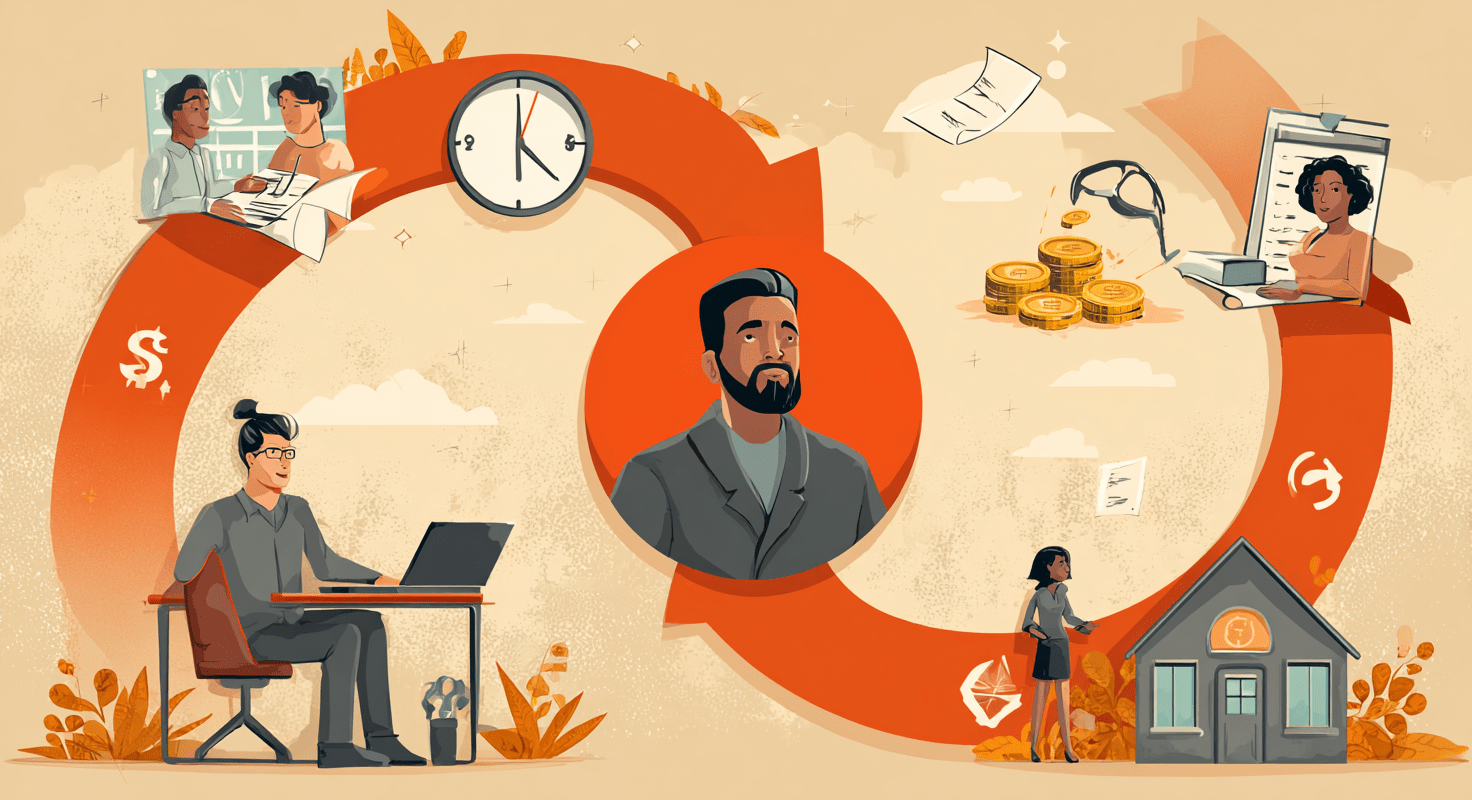Great service isn’t just a perk—it’s a growth engine. The best way to master it? Learn from powerful customer service examples that show what works in the real world.
Today’s winning strategies use an omnichannel approach, integrating multiple channels for seamless, consistent support. In a world where one bad experience can go viral, studying customer service examples helps businesses refine their approach, boost satisfaction, and protect their brand.
In this blog, we’ll share practical ways to improve service, backed by examples you can apply right away.
Learn from the best customer service examples today!
What is Customer Service?
Every business interacts with customers who seek support after purchasing products or services. Addressing these queries effectively defines the foundation of great customer service. A well-trained support team ensures a seamless customer service experience, helping customers feel valued and satisfied.

Importance of Customer Service Examples in Contact Centers
Increase Customer Satisfaction
Delivering an excellent customer service experience in a contact center directly impacts crucial metrics like Average Handle Time (AHT) and First Call Resolution (FCR). Lower AHT ensures efficient service, while high FCR means issues are resolved on the first contact, leading to satisfied customers and a positive overall experience.
Improve Customer Loyalty:
Customer loyalty is closely tied to the quality of service provided. With 96% of customers considering customer service a key factor in their loyalty decisions, tracking metrics like Customer Satisfaction Score (CSAT) and Net Promoter Score (NPS) is essential.
Contact centers that deliver the best customer service foster strong, long-term customer relationships and repeat business.
Reduce Customer Acquisition Costs:
Exceptional customer service can turn happy customers into brand ambassadors who spread positive word-of-mouth.
These referrals help attract new customers at a lower cost. Metrics such as Customer Effort Score (CES) gauge how easy it is for customers to resolve their issues, which can further boost retention and referrals.
Empower Your Agents to Serve Better:
Optimizing metrics such as Agent Utilization and Call Abandonment Rate enables contact centers to empower their agents to deliver better service.
By incorporating these practices, contact centers can consistently provide examples of good customer service, thereby enhancing both agent performance and customer satisfaction.
Now that we’ve discussed the importance of key metrics, let’s explore some customer service examples that demonstrate how to improve service delivery with real-world examples of good customer service.
How to Improve Customer Service at a Contact Center
Improving customer service in a contact center begins with equipping agents with the right training and tools to enhance their performance. Here are some key strategies for optimizing customer service through better processes and metrics:
1. Address Customer Service Problems Before Impact:
In a contact center, proactively identifying recurring issues and addressing them before they escalate is crucial. For example, if customer complaints about a recurring issue increase, customer service teams should intervene early and communicate openly with customers.
This prevents the problem from spiraling and negatively impacting metrics such as First Call Resolution (FCR). Early intervention keeps customers satisfied and reduces unnecessary repeat calls, ultimately improving Average Handle Time (AHT) and Call Abandonment Rates.
2. Ask Customers for Their Feedback:
Regularly gathering customer feedback through surveys or post-interaction forms helps identify areas that need improvement. By tracking feedback, contact centers can measure Customer Satisfaction (CSAT) and adjust their processes to ensure faster response times and issue resolutions.
Feedback allows managers to focus on improving areas like First Response Time and Repeat Call Rates, enhancing the overall customer service experience.
3. Be Empathetic with Customers:
Empathy plays a significant role in improving CSAT scores. When agents listen attentively to customers and show genuine concern, it can turn even a negative situation into a positive experience.
An empathetic approach helps in reducing Call Abandonment Rates. It improves Repeat Call Rates, as customers are more likely to stay loyal to brands that treat them with understanding and respect. This is a key element in providing excellent customer service.
4. Turn Customer Mistakes into Service Opportunities:
Mistakes happen, and when customers make them, it's an opportunity for contact centers to shine. For instance, if a customer forgets to follow through on a return or makes an error, agents can handle the situation with grace, creating a memorable service experience. While it’s crucial to address recurring customer mistakes through training or process changes, ensuring quick and easy fixes whenever possible can improve FCR and CSAT scores. This approach represents examples of excellent customer service.
5. Implement Personalized Responses:
Personalization is key to improving customer service metrics. Instead of sending generic, templated responses, contact centers should aim to craft tailored replies. This approach increases CSAT and reduces Repeat Call Rates by addressing customer concerns directly.
Personalized service helps customers feel valued and understood, resulting in better overall experiences and quicker resolutions. Great customer service examples demonstrate the importance of personalization.
6. Empower Agents to Improve Customer Experience:
Empowered agents provide better service, and training plays a significant role in improving contact center metrics. By using tools like real-time assistance and automated coaching, agents can improve their performance in areas like AHT and First Response Time.
These tools offer tailored coaching and real-time feedback, which enhances agent efficiency, leading to improved service levels across the board. This contributes to outstanding customer service. To choose automation that truly moves AHT, FCR, and CSAT, teams should evaluate AI customer support software side-by-side. This 15-tool comparison highlights must-have capabilities agent assist, intent detection, omnichannel orchestration, and analytics so leaders can shortlist platforms that align with their contact center goals.
7. Be Ready to Change:
Being responsive to customer feedback is crucial in optimizing the customer service process. When Sainsbury’s rebranded their “Tiger Bread” to “Giraffe Bread” based on a customer suggestion, it showed their commitment to improving the customer experience.
In a contact center, being open to change and implementing improvements based on customer input can have a significant impact on customer loyalty and service metrics, like CSAT and FCR. This willingness to adapt is an example of excellent customer service in action.
By focusing on these strategies and consistently monitoring key metrics, contact centers can significantly enhance their customer service experience, thereby improving overall performance and boosting customer satisfaction. These service examples demonstrate how small changes can make a substantial difference in the overall customer journey.
Craft the Perfect Customer Service Performance Review
This blog is just the start.
Unlock the power of Convin’s AI with a live demo.

Convin’s AI Phone Calls: Real Customer Service Example of Consistent Support
Now that we understand the importance of good customer service in call centers and how to achieve it, let’s explore how Convin does it. Convin's AI Phone Call is a powerful virtual agent that ensures consistent customer experiences through natural language processing and machine learning.
What Is Convin's AI Phone Calls?
Convin's AI Voicebot is an advanced virtual agent that delivers consistent, high-quality customer service. By utilizing natural language processing (NLP) and machine learning, the AI voicebot can handle customer queries with accuracy and speed, ensuring that the service experience is consistent across all touchpoints.
Key Features of Convin's AI Voicebot:
- Multi-Channel Integration: The AI voicebot works seamlessly across phone, email, and chat platforms, ensuring the customer journey remains consistent.
- Data-Driven Responses: It leverages historical data and AI to provide contextual responses, improving the accuracy and relevance. 24/7
- 24/7 Availability: Unlike human agents, AI voicebots can provide round-the-clock service, ensuring customers get the help they need anytime.
Performance Data:
- Faster Issue Resolution: Convin's AI voicebot reduces customers' waiting time by handling routine inquiries and simple tasks.
- Improvement in Customer Satisfaction: Businesses using the AI voicebot report higher levels of customer satisfaction due to its consistent performance and immediate response capabilities.
AI tools like Convin's AI Phone Calls eliminate variability in human service, providing a seamless and reliable experience every time a customer interacts with the brand. By automating routine interactions, the Voicebot minimizes human errors and reduces wait times, ensuring reliable customer experiences.
Helping Agents Improve with Customer Service Examples
These real-life examples of good customer service illustrate the training that agents need. When they're trained to deliver excellent customer service, it reflects in their performance.
In the hectic life of a customer service agent, it's essential to adopt efficient methods that save time. Using automated coaching is a relevant option.
Learn more about our customer service solutions and request a quote.
Frequently Asked Questions
1. What are some good customer service examples?
Examples of excellent customer service include resolving customer issues quickly, providing personalized responses, and maintaining a friendly and empathetic tone. These practices enhance the customer service experience and create examples of good customer service that leave a lasting impression.
2. How can businesses provide exceptional customer service?
Businesses can deliver exceptional customer service by equipping agents with comprehensive training, utilizing real-time assistance tools, and proactively addressing customer concerns. These strategies create exemplars of excellent customer service that foster customer loyalty and satisfaction.
3. Why is good customer service important for businesses?
Good customer service is crucial for retaining customers, attracting new ones, and improving overall satisfaction. Excellent customer service examples often highlight the impact of resolving issues efficiently and enhancing the customer service experience through empathy and personalized interactions.
4. How can a business improve its customer service experience?
A business can improve its customer service experience by adopting tools that enhance agent performance, gathering feedback to refine processes, and implementing personalized communication. These steps result in examples of exceptional customer service and long-term customer loyalty.


.avif)






.avif)